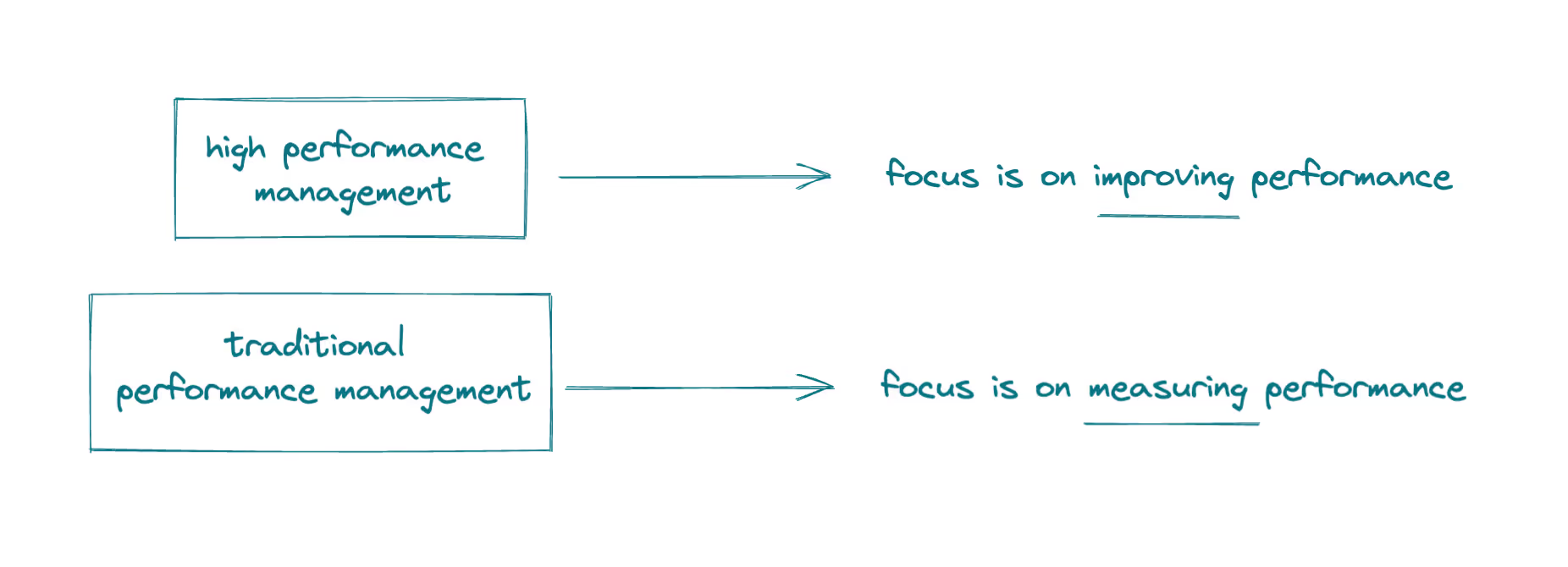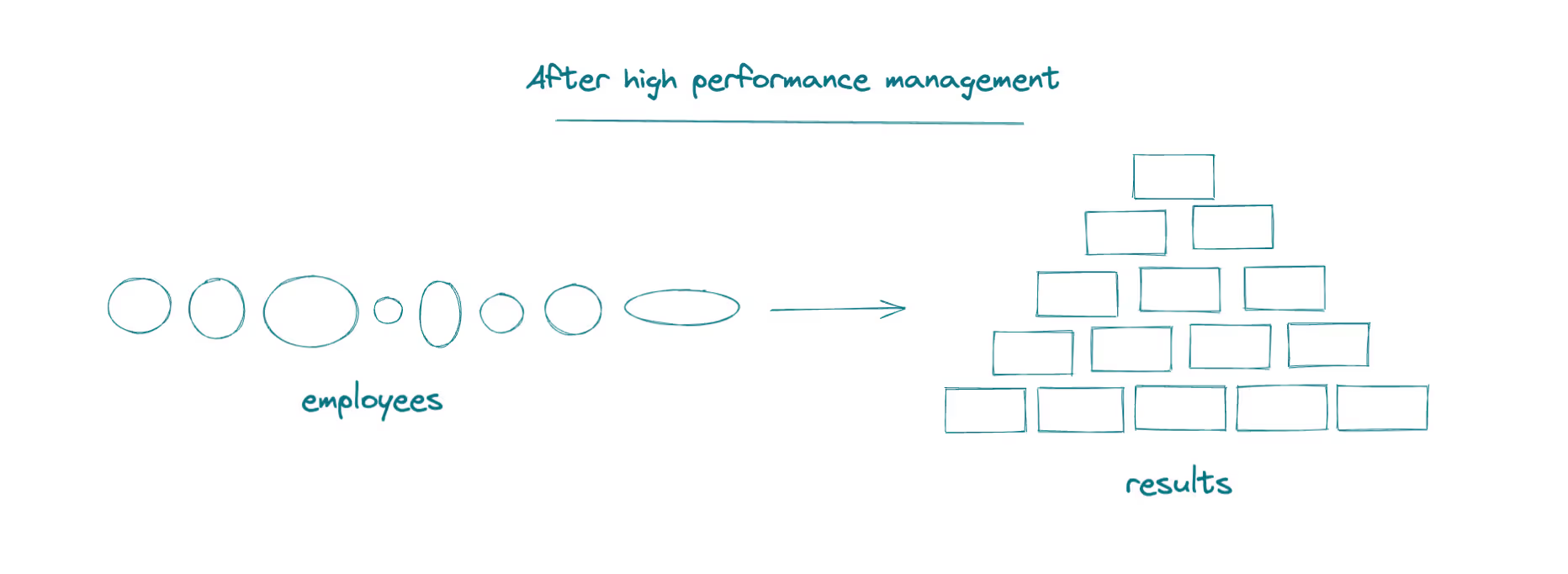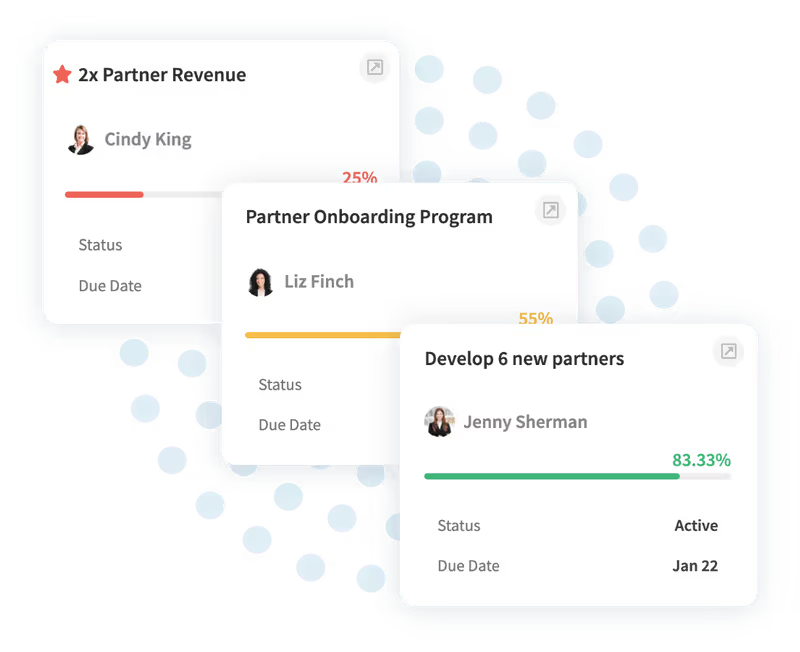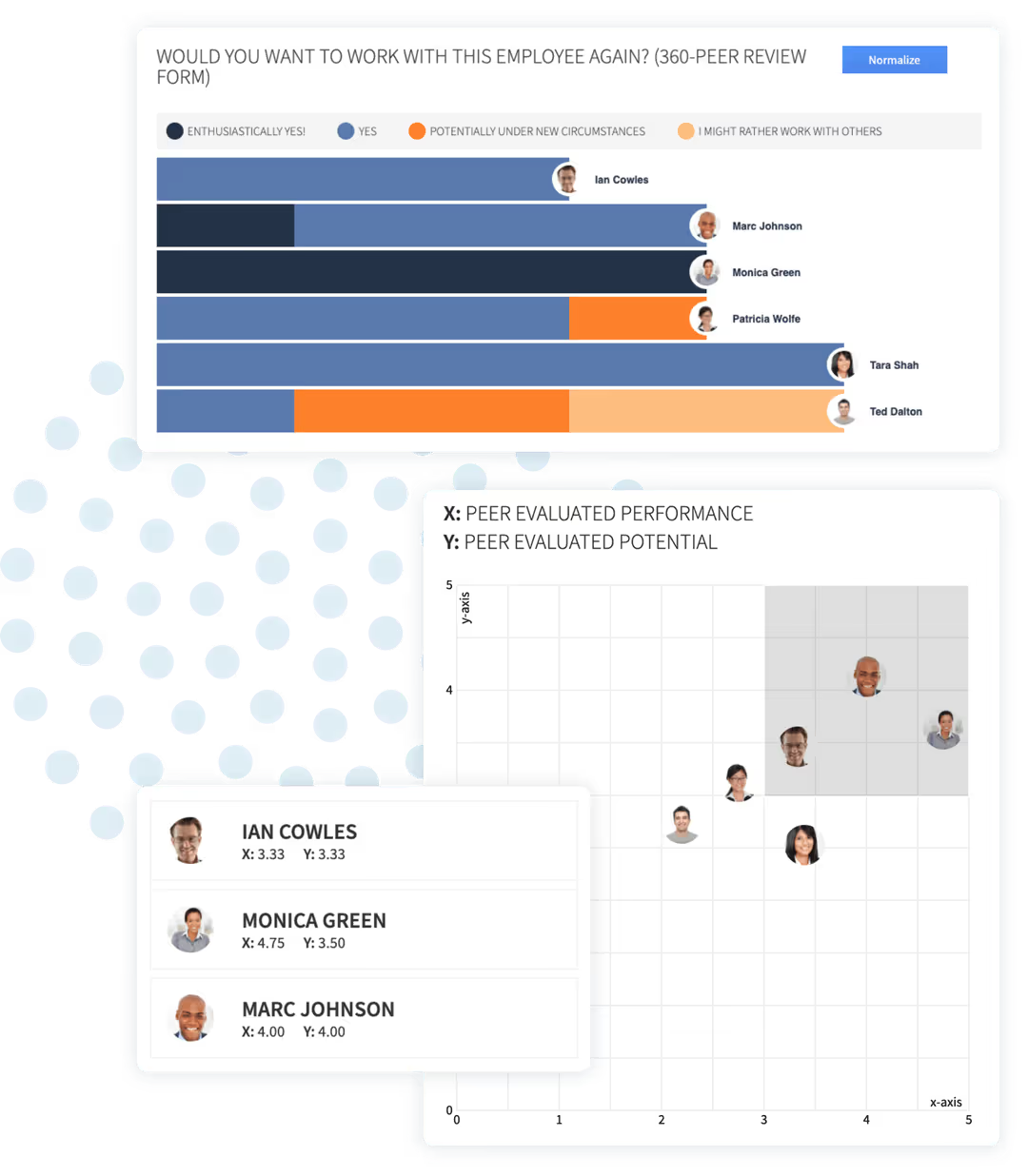How to Design a High Performance Management Process
Here’s something you might not realize. If you are familiar with performance management, you are also familiar with the concept of high performance management.
High performance management is what all HR teams strive for when they put a performance management strategy in place. For that reason, performance management and high performance management are often used interchangeably.
But they aren’t the same.
You can have a performance management system that isn’t high performing. Most businesses take an approach to performance management that falls into this category.
So, exactly what is the difference?
A high performance management approach motivates, measures, and develops the performance of a team. It incorporates employee strengths and skills into a focused strategy. The system relies on shared goals, transparent communication, and the involvement of all team members.
Detailed performance metrics are a big part of high performance management systems. These systems can increase productivity while instilling a sense of progress and growth in employees.
Traditional performance management is often used to tell employees how management thinks they are doing. High performance management makes more of an impact on performance.

So, how do you go from a regular performance management system to a high performance management system?
You start by understanding the characteristics that make high performance management systems different.
Five Characteristics of High Performance Management Systems
Smart HR departments sit at the helm of high performance management systems. These departments understand the importance of human-centered performance management.
Here are five key attributes of high performance management systems:
- Frequent touchpoints
- Team-based reviews that measure high performing teams
- Goal tracking as part of the review cycle
- A data-based approach to performance reviews
- Software that runs an integrated performance management system
1. Frequent touchpoints
The lone annual review is dead. One reason for that is the annual review can’t account for changing goals.
High-performing teams have goals, and they reach those goals. When those goals are reached, teams and individuals need new goals. Sometimes teams realize that existing goals aren’t quite hitting the mark. The team can scrap these goals and replace them with new ones.
A good goal-setting strategy sees goals aligned all the time—not once a year when annual reviews roll around.
That means managers and HR are very involved with high-performing teams, reviewing, tweaking, and working with individuals, management, and departments to celebrate achieving goals and making new ones on a weekly, monthly, or project basis. Frequent touchpoints and goal check-ins are baked into the process to ensure everyone is on the right track.
The GROW coaching model is a great tool to structure these frequent touchpoints and ensure productive coaching sessions.
2. Team-based reviews that measure high performing teams
Two-thirds of performance management systems fail to recognize high performers. That’s a huge problem, as it leads to disengagement.
Highly engaged employees are nearly 90 percent less likely to leave their roles. In addition, companies that rank in the top quartile for employee engagement report that they are 23 percent more profitable. Consistently measuring individuals and their performance is vital to the success of any organization.
But there’s a missing piece.

The best high performance management systems also measure teams.
Individual performance impacts the team's performance, but teams also have to work together. High performance management measures team processes, practices, and collaboration. These factors are difficult to assess in individual reviews.
With team-based reviews, you can measure the team as a whole, providing support wherever it's needed. As the head of the team, managers are included in this process, creating an atmosphere for high performing teams that can thrive.

Consider incorporating project-based reviews
Team-based reviews aren’t a one-size-fits-all approach for those who work closely with others. In some cases, a project-based review is a better option.
With a project-based review, you can focus on the work after the project is completed instead of waiting until the next review cycle. Goals can be clearly defined and easily measured against the specifics of the project, with feedback closely tied to the work that was performed.
This approach is best for teams that work on distinct, discrete projects, as well as separate teams that come together to complete a shared goal.
Make sure you cater the review process to fit your needs. For example, you may not need a review after every single project if projects wrap up every week or two. Projects that take a quarter or longer may need at least one review during the project to make sure everyone is on track.
3. Goal tracking as part of the review cycle
When you get right down to it, high performance management is all about getting individuals and teams to hit ambitious goals. The question is, how clear are those goals? And, how will you know when those goals have been achieved?
A strong goal-setting and tracking system is needed to successfully integrate goals into the review cycle. That means creating goal-setting criteria that will help your management teams and employees to set specific, clear, focused goals that can easily be measured and tracked.
It also means setting the right goals. They need to push employees slightly beyond their comfort zone. However, goals must also be attainable. When you find that sweet spot, employees feel motivated to reach their goals.
Additional considerations when adding goals to a high-performance management system include:
- Remember to align individual and organizational goals
- Separate employee development goals from company goals
- Have a system for adjusting goals
Remember to align individual and organizational goals
Individual goals can be misleading. On the surface, they may sound like great goals for each employee to accomplish. However, if they aren’t aligned with organizational goals, your employees may meet their goals without meeting company objectives.
Aligning employee goals with corporate objectives allows HR and management to promote shared values and work together to accomplish the same business objectives. Cascading goals can also provide greater transparency, enabling employees to see how their work affects the company as a whole.

Separate employee development goals from company goals
Individual goals that further the company are important, but personal goals are important too.
Nearly 75 percent of employees say they aren't reaching their full potential due to a lack of development opportunities. Provide employees with personalized development goals so they can learn the skills they need to feel more confident and effective.
Providing employees with development opportunities can boost morale among employees. It can also strengthen your business. These employees will be more effective, which can boost your bottom line.
Have a system for adjusting goals
High-performing goals aren’t set and then forgotten until it’s time for reviews. Teams adjust them and tweaked the goals as needed.
This can seem like a labor-intensive process, but it’s important. Only with aligned goals can you make effective gains in your organization.
Software like PerformYard makes it easy to adjust goals. It allows you to break goals down into manageable parts that can be tweaked. You can also set different goal buckets for your employees. It’s easy to select one bucket whenever a goal needs to be tweaked.
When you have a system in place, it feels like less of a hassle to adjust goals, so you’re more likely to revisit goals frequently.
Free Resource: Employee Coaching Template
4. A data-based approach to performance reviews
Figuring out if a goal has been achieved isn’t always easy. Some goals may appear to have been achieved on the surface, but not when you take a deeper dive into the data. Not to mention, without a data-driven approach to performance management, your management teams and employees are more likely to create shallow goals that are impossible to measure.
If you're striving for a high performance management system, you have to take a data-based approach to performance reviews.
When creating or reviewing goals set by employees and managers, ask yourself, “How will I know when a goal has been achieved?” When you ask this question, you’ll naturally find yourself adjusting goals so that they can easily be tracked and measured.
For example, does an employee have to make a certain number of sales? How will the employee show they have learned how to use a new platform? Are peer reviews needed to see if employees met collaboration goals?
Keep the numbers in mind when setting goals and you’ll create measurable goals that will propel your employees and your company forward.

5. Software that runs an integrated performance management system
Performance management can be a pain. That’s usually the case when HR departments use tools that aren’t right for the job. It takes a lot of time to set up performance management through systems like Excel, Google Sheets, or Google Surveys. You’ll need specialized knowledge to manipulate these programs to meet your needs.
High performance management takes the process to the next level. These programs use software like PerformYard which is built to run integrated performance management systems.
PerformYard’s flexible performance management platform lets HR create, send, and track reviews. It also runs goal management programs and helps companies build a culture of meaningful feedback.

If you want to take your business to new heights, schedule a PerformYard demo. The platform makes it easy to build a high performance management system. You can quickly replace your old system with one that has a direct impact on performance.


